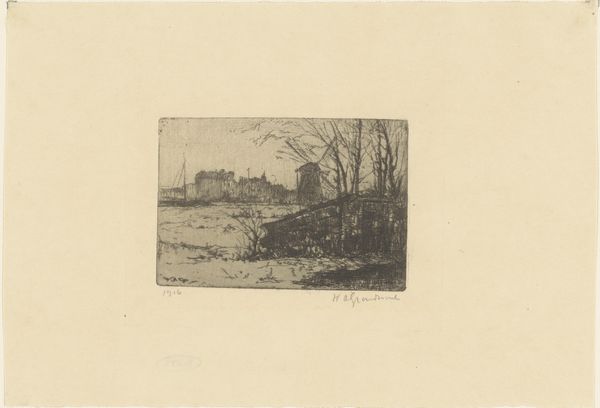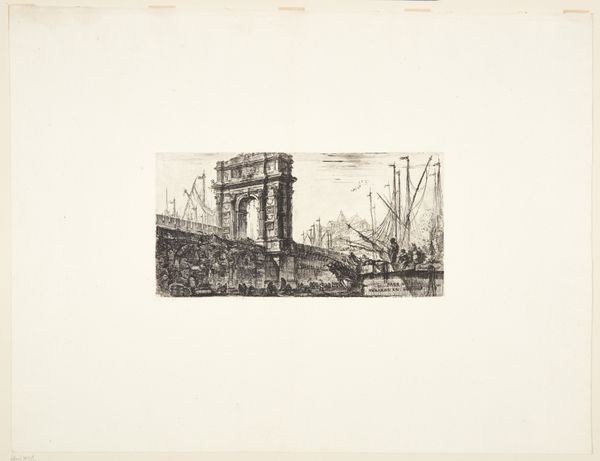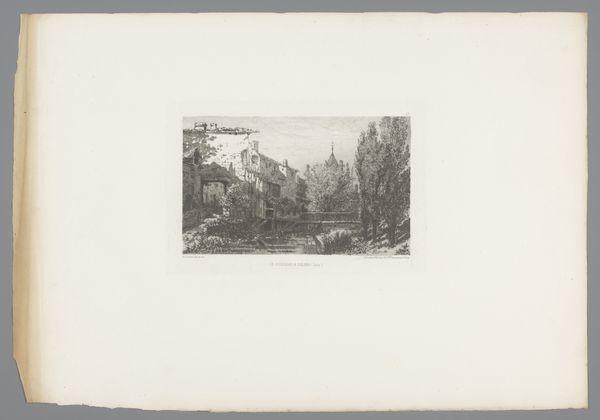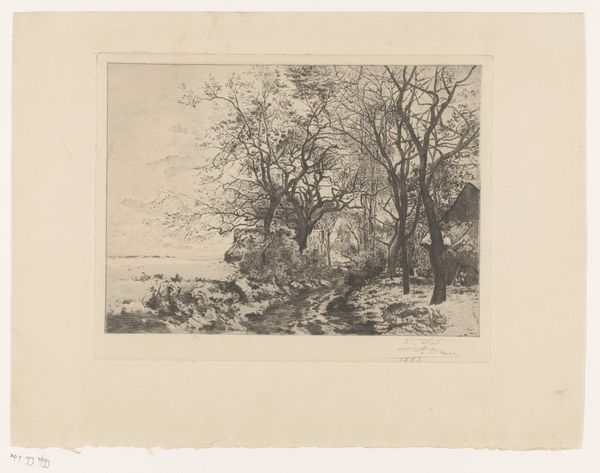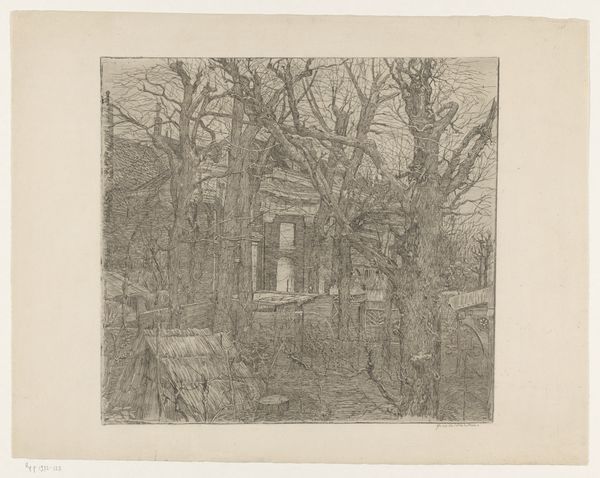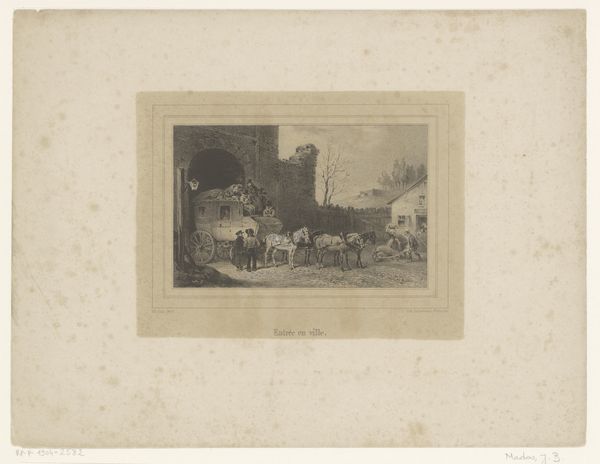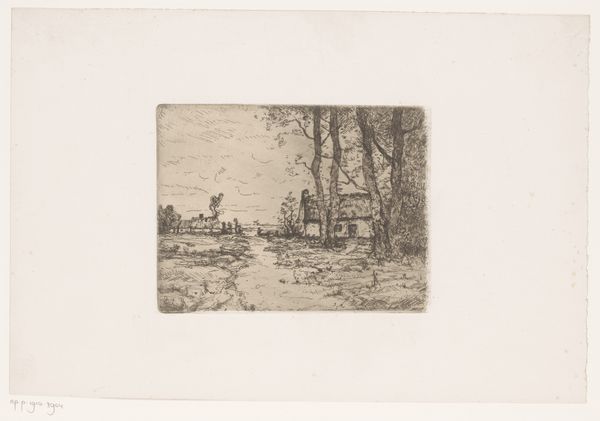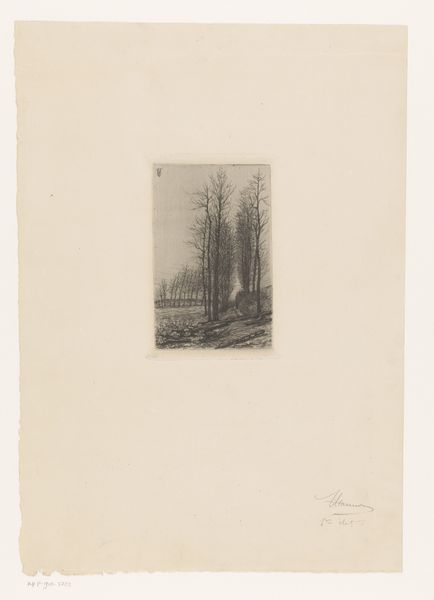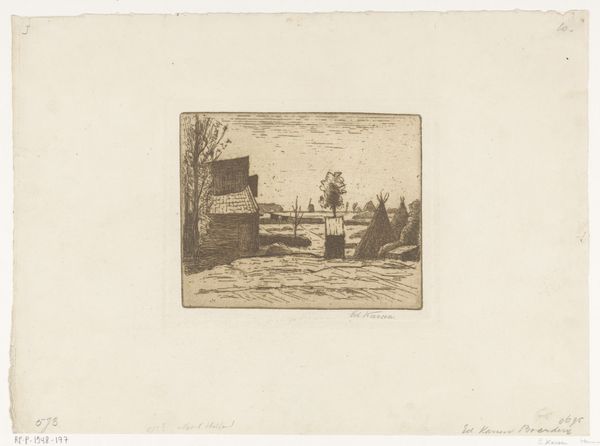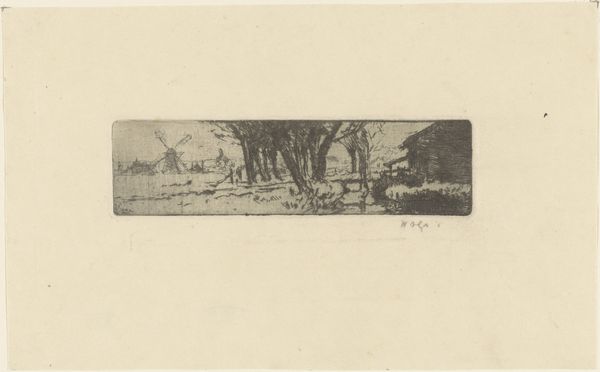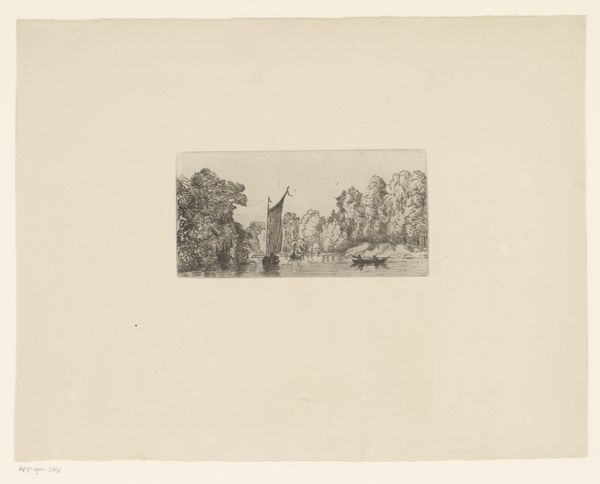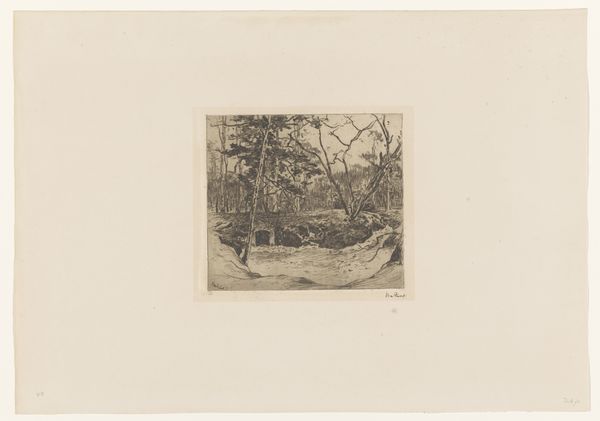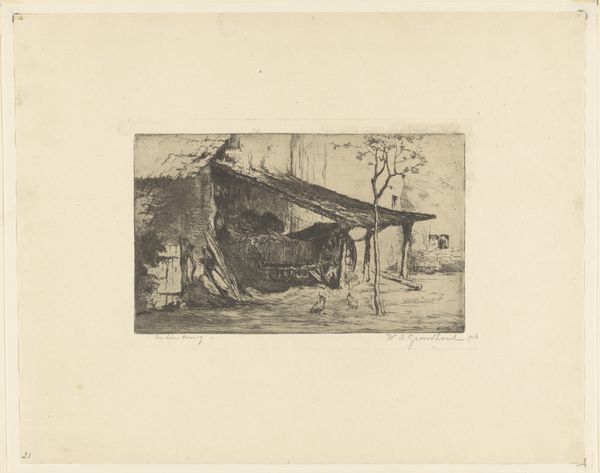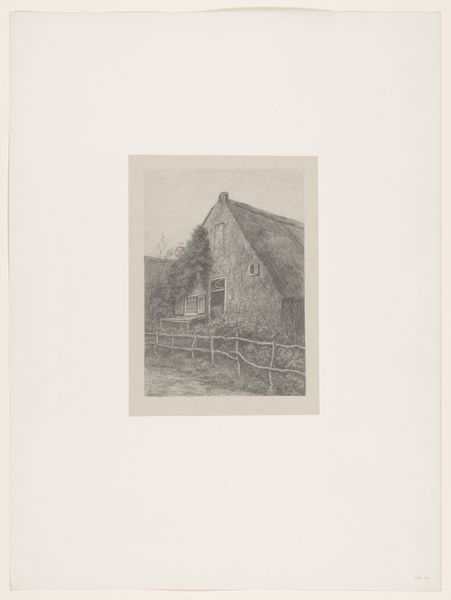
drawing, etching, paper, ink, pencil
#
drawing
#
ink paper printed
#
etching
#
landscape
#
paper
#
road
#
ink
#
pencil
Dimensions: height 100 mm, width 130 mm
Copyright: Rijks Museum: Open Domain
Curator: The piece before us is titled "Dorpsgezicht met figuur op een weg," which translates to "Village Scene with Figure on a Road." It's an etching by Theodoor Hannon, dating roughly from 1861 to 1910, and currently held here at the Rijksmuseum. Editor: It's bleak, isn't it? That thin, gray wash of ink; a stark composition really hits the viewer immediately, quite effectively. A somber snapshot of a mundane route, perhaps. Curator: Notice how Hannon employs line to delineate form. The architecture, reduced to essential geometric shapes, is offset by the skeletal tree, lending the piece a subtly dynamic tension. The horizon line is rather low, don’t you think, which amplifies a sense of looming atmosphere? Editor: Absolutely. And I'm immediately drawn to the evidence of process – the laid paper visible through the applied ink, giving it that texture, suggesting hand-made production over mere reproduction. We can almost picture the labor involved in creating each individual print. Curator: Semiotically speaking, the road itself could be viewed as a signifier. The figure traversing it might symbolize the passage of time, perhaps alluding to human progress or even the transience of life. Editor: Or the simple everyday toil. The availability of affordable printed images expanded exponentially in this period – democratizing representation. This image documents labor and village life, giving us a small window into a particular lived reality that would’ve been less explored in previous high art forms. Curator: Interesting observation. The artist’s strategic choices in structuring the composition allows one to understand more than simply depicting a rustic road, but the structure of feeling during the rise of new mass mediums of its age. Editor: Seeing the trace of ink on the page reminds me about how printmakers acted as communicators during the growth of industrial society. It is so cool how artists like Hannon would have interacted with publishers, shop owners, ink and paper suppliers—these were essential artistic collaborations, that informed art's broader dissemination and interpretation. Curator: It allows me to reassess how line and space interact, and to reflect more thoughtfully about signs within Hannon’s village vista, considering the complex intersection of history, process, and formal choice. Editor: Thinking about art’s journey from the studio into culture enriches its visual appeal, making us consider the lives impacted both by the content and by the production of a work like Hannon's etching.
Comments
No comments
Be the first to comment and join the conversation on the ultimate creative platform.
